The late Peter Brock was an authentic genius. He held no college degree or engineering qualifications, but he could slip behind the wheel of almost any car and immediately know what it needed to perform at its best. He founded HDT Special Vehicles in 1980 to help bankroll his racing team. HDT produced some of the most desirable high-performance cars to grace Australian roads during its seven years of operation. Many believe that the company reached its peak with the 1985 Commodore SS Group A, a thinly disguised race car designed to achieve success on the world motorsport stage. While HDT officially produced 500 examples of the Group A, 502 cars rolled out of their factory. Our feature car is identified as #047/500, and it presents superbly. It has a genuine 20,000 kilometers (12,400 miles) showing on its odometer. It needs a new home, so the owner has listed it for sale here at Grays Online. Bidding is set to open in Australia on April 21st, with the hammer to drop on April 26th.
To understand the driving force behind the existence of the VK SS Group A, a bit of historical context is required. While it featured many of the same players in General Motors, Ford, and Chrysler, the Australian performance car scene differed from North America’s. While the US scene primarily focused on muscle cars, the scene Down Under was driven by the need for motorsport success encapsulated in the age-old “win on Sunday, sell on Monday” philosophy. There was great emphasis placed on victory in the annual endurance race conducted each October at Bathurst because success there had a proven impact on showroom traffic in the weeks following. Australia’s premier racing formula has been touring car or saloon racing, and until 1984, it was conducted under a set of unique rules called Group C Improved Touring. This category utilized production bodyshells, engines, and suspension configurations but with key modifications to encourage faster and closer racing. However, the category eventually became a minefield. Providing performance parity between cars as diverse as a Falcon or Commodore V8, a Camaro Z/28, a Mazda RX7, a Nissan Bluebird Turbo, a BMW 635Csi, and a Jaguar XJS became impossible. From 1985, Australia switched to International Group A regulations, and thus was born the need for production cars offerings capable of participating successfully on the world stage. General Motors had a worldwide ban on competition during the 1960s, ’70, and ’80s, but Holden devised a way of circumventing the ban. They contracted a gentleman named Peter Brock and his HDT race team to develop the homologation modifications for their Group A contenders. Instead of supplying a racing budget, Brock received a commission on each car completed and sold through a select group of Holden dealerships. These funds supported his team, and the partnership worked successfully until a very messy and public split in 1987. Thus, HDT literally stood for Holden Dealer Team. The VK SS Group A was the first of four homologation models produced before Australia stepped away from Group A regulations in 1993.
The VK SS Group A started life like any other production Commodore rolling down the company’s production line. It received no extra attention during the early stages of the build because it was considered just another Commodore. However, the story changed when the car reached the paint shop. While the Holden brand is inextricably linked to shades of Red, Brock’s HDT operation wanted something different. After years of faithful service, the team severed its ties with tobacco sponsorship at the end of 1984, commencing 1985 with a new naming-rights sponsor in the form of Mobil. The oil giant’s corporate color is blue, so every SS Group A bodyshell received a coat of Formula Blue paint before proceeding to the next stage of the build. Once assembled, Holden shipped the cars to the HDT workshop, where employees fitted distinctive alloy wheels and spoilers designed to improve aerodynamic efficiency and downforce. The last piece of the puzzle was the decals and stickers identifying each Commodore as something special. This Commodore features these original items as it has never undergone restoration. The paint shines well, with no significant issues. The aerodynamic add-ons, including the damage-prone front spoiler, also look excellent, while the wheels are free from stains or other problems.
Many people feel that for a limited edition classic, the interior equipment in a Group A is pretty underwhelming. The dash and gauge cluster are standard Holden fare, as are the carpet and console. However, buyers received a few key tweaks to help their car stand out from the crowd. The leather-wrapped Momo wheel is unique to this range, as are the HDT shifter knob and the Herringbone cloth Scheel seats. Buyers also received a premium Eurovox radio/cassette player and a glove compartment plaque with their car’s build number. As for power windows, power locks, cruise control, and air conditioning? Forget it because those items add unwanted weight to a car designed as a homologation special. The interior condition is good for a classic of this age. There is no evidence of wear or physical damage, while the harsh Australian sun has spared the trim and plastic. There are no aftermarket additions, which is crucial in this type of Holden.
The magic behind what makes this Commodore stand out remains hidden under the hood, and it deserves its own explanation. At the start of the 1960s, Holden commanded more than 50% of the Australian new car market in its own right. The remaining sales were split between European and American imports. Ford was locally assembling the British Zephyr, but this was an expensive process. Ford Australia eventually launched the Falcon in 1960, and Holden knew it had a fight on its hands. The newcomer was more stylish and modern than the existing Holden, and GM knew that Ford had a V8 in its armory that it wished to deploy. Holden engineers began a secret program to develop a home-grown V8 to minimize its reliance on imported motors. These new engines hit production in 1969, with capacities of 253ci and 308ci. The 308 became the company’s competition weapon of choice, serving faithfully until the end of the Group C era in 1984. Group A brought a new series of challenges, based on a complicated formula surrounding engine capacity, weight, and tire size. Being a European formula, all weights and capacities were measured in metric, which proved Holden’s sticking point. The 308 had a metric capacity of 5,044cc, meaning Commodores had to carry a minimum weight of 1,400 kilograms (3,086lbs). If the Commodore could sneak below 5.0-liters, that would wipe a substantial 75 kilograms (165lbs) from that total. In a show of good faith, Holden re-engineered the venerable 308, bringing its capacity down to 304ci. The change had no impact on power, but the result was worth the effort, with the engine capacity dropping below the magic 5.0-liter mark. Once the cars arrived at the HDT workshop from the Holden production line, mechanics descended on each vehicle, upgrading the cylinder heads, fitting roller rockers, exhaust headers, a free-flowing exhaust, and blueprinting the carburetor and distributor. The upgraded motor pumped out a healthy 268hp that fed to the limited-slip rear end via a four-speed M21 manual transmission. If a buyer pointed their shiny new Group A at a ¼ mile, it would cover the distance in 14.3 seconds before winding its way to 137mph. With careful tuning and the right camshaft, racing versions produced around 400hp and could top 160mph. Our feature car is numbers-matching and is in excellent mechanical health. It comes with a complete service history and all its original documentation. As icing on the cake, its odometer shows a genuine 20,000 kilometers (12,400 miles).
I had the privilege of meeting Peter Brock (or “Brockie”) on many occasions, both at the track and in social settings. Not only did he possess a driving talent that comes along once in a generation, but he was a genuine man of the people. I am not alone in feeling that when you talked to the great man, you were the only person that mattered in his world. You remained his sole focus, and no Australian driver was willing to stay at the track after racing for as long as Brockie to sign autographs and pose for fan photos. Australian racing fans are a parochial bunch, relatively evenly divided between Ford and Holden supporters. Some readers may think that my opinion of Brock stems from an ingrained loyalty to Holden, but nothing could be further from the truth. My allegiance rests with the Blue-Oval, but my interaction with the man allowed me to form an opinion beyond motorsport’s boundary. He survived as a professional racer during a period when safety measures were severely lacking, hanging up his helmet on a full-time career in 1997. After a couple of one-off appearances at the iconic Bathurst 1000 in 2002 and 2004, he spent his retirement years competing in tarmac rallies for pure enjoyment. September 8th, 2006, will always be seen as the darkest day in Australian motorsport. Competing in a rally in Western Australia behind the wheel of a 2001 Daytona Replica, Brock’s car skidded off the road on a downhill left-hand bend. The vehicle impacted a tree directly on the driver’s door, and Australia’s most celebrated driver was dead. The outpouring of emotion was immense, and the winner’s trophy for the Bathurst 1000 will now carry his name forever. The man may be gone, but his memory and legacy live on. Cars like this 1985 Commodore SS Group A form a part of that legacy, and I suspect the bidding will be pretty intense. I will watch this auction with interest.





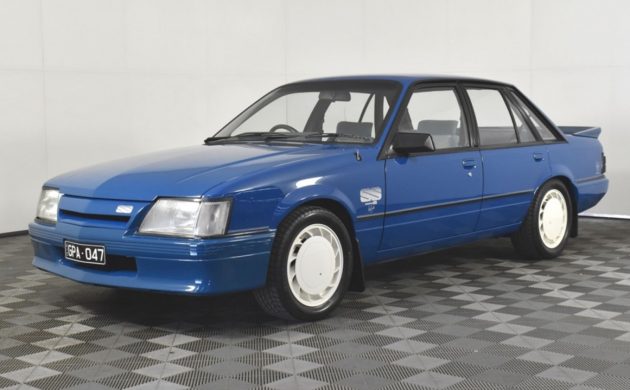

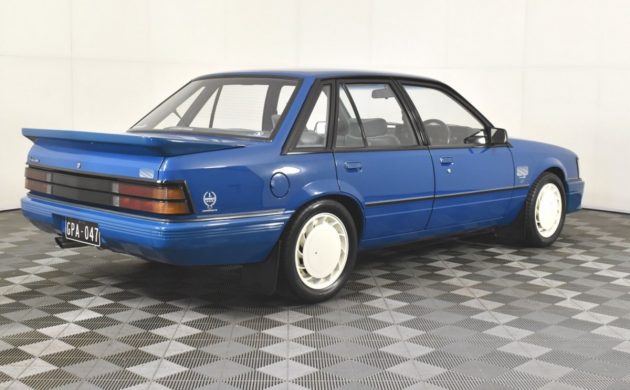
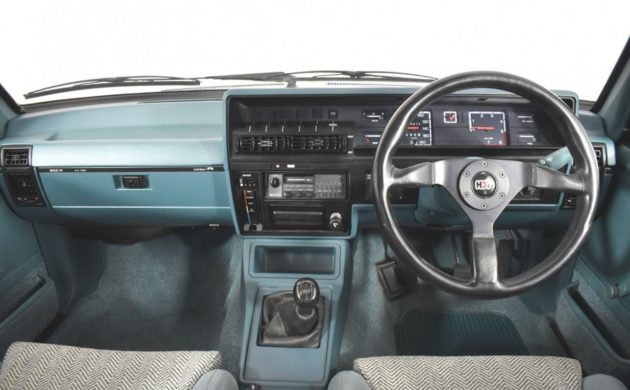
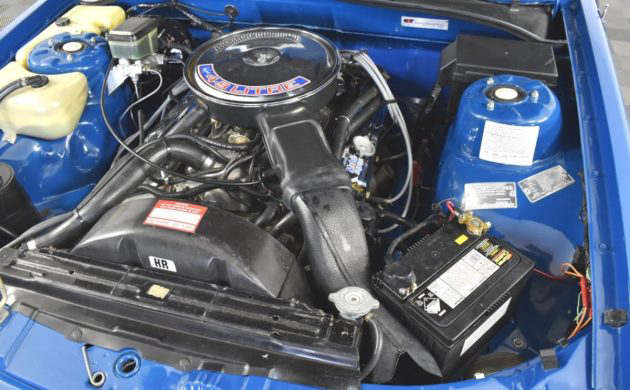
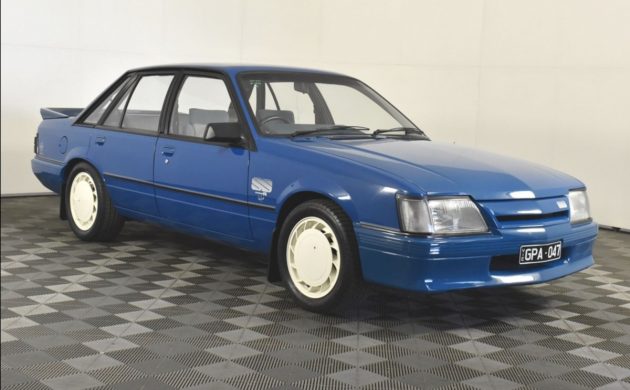
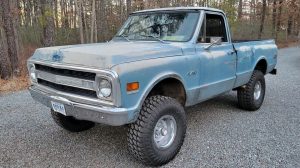
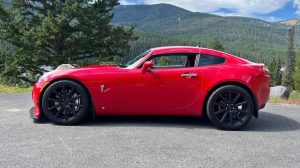




Superb write-up, Adam! If I wasn’t a fan of the “classic” era of Australian motorsport before, I would be now. In the days when American cable TV padded its then-meager content with broadcasts of Group A from Oz and of course the DTM, I was an avid watcher. Some of the races made NASCAR pale by comparison….
Best of all (to me, anyway), you provided a glimpse, too brief but still there, into Peter Brock as a human, not as just one of the giants of racing/tuning Down Under. That’s very much appreciated.
Wish I could bid! This appears to be great fun to drive (as if the next owner would do so, which I doubt). In the USA, this would be a real stealth machine, as the blue paint would be sufficiently inconspicuous to not provoke The Law. I’d put its next 12K miles on it pretty quickly….
Once again, Adam, thanks!
Looks like a 4 door sports car Maxima
This is a cool sedan. 4 dr , V8 , manual, rollbup window, good seats, and a box shape 👍
Speaking of Commodores remember The Commodore from the movie Maverick.. He had a heck of a hand at the final table in the poker game ♠️
When it came time to show the cards the Commodore announced 🗣 2 pair….
8s and 8s.”
Then laid down 4 of a kind.
But did also standard fare Commodores get the V8 or was base engine another boring I-4 like its Opel Commodore sibling?
…I mean Senator…
The standard versions did indeed get V8s. And I remember watching Peter Brock drive these same cars at Bathurst back in the day. These were great cars to drive.
I think the standard version that local_sheriff is referring to is what we would regard as the base version. These of course had the 3.3 liter six cylinder engine which was an upgrades version of the engine that had powered Commodores from the beginning, although in the VK it now sported a 12 port head. An EFI version was also introduced with the VK.
Like the EFI engine, several V8s were also available as an option.
Certainly not out of any barn. Way over priced by at least 5 tines in my opinion.
I’d take the Galaxie 500, the later listing from today.
Great write up !
Vern Schuppan was regarded at the height of his career to be the best allround driver in the world. Then along came Peter “Perfect” Brock for which Vern Schuppan was in absolute awe of .. and when asked Schuppan said – there’s not a driver in the world that is better than Peter “Perfect” Brock.
Words like that coming the Worlds best in Schuppan …?… now that saying something … RIP Brocky 9 times “King of the mountain” Bathurst, round Australia rodex rally winner in a Commodore, 4x Australian touring car champion, Australian Nascar winner, 3rd Nuremburg 24hr road race, podium at Indianapolis, 1st x Bathurst 12 hr and many many other high pofile races he won or placed around the world was absolutely phenominal … Champ👍